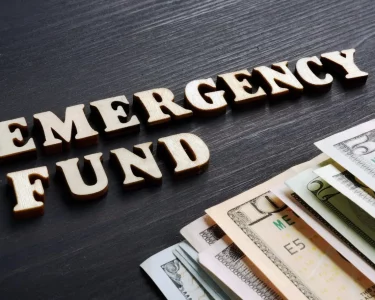The stock market has been a rollercoaster ride lately, with unprecedented drops and unpredictable surges. As investors grapple with the uncertainty of fluctuating prices, one thing is clear: these recent trends are signalling a great correction in company valuations. In this blog post, we’ll dive into what this means for businesses and investors alike, exploring how to navigate the choppy waters ahead and make strategic decisions that will pay off in the long run. Get ready to learn about the key factors driving market shifts – and how you can stay ahead of them!
What is the Great Correction?
It’s no secret that the stock market has been on a roller coaster ride over the past few months. After hitting all-time highs in early September, the market took a sharp turn downward, with the Dow Jones Industrial Average losing over 1,500 points in just two weeks.
This sudden drop in stock prices has led many investors to question whether we are heading for another recession. However, while there are certainly some risks that could lead to a recession, there are also a number of factors that suggest the current market volatility is simply a case of “the great correction.”
So what exactly is the great correction? In short, it is a period of time when stock prices fall back down to more realistic levels after reaching unsustainable heights. This can happen for a variety of reasons, but typically it is caused by a combination of overvaluation and negative news or events.
We have seen this happen before in 2000 and 2008, and both times it resulted in a significant bear market. However, while those corrections were driven by major economic bubbles bursting (dot-com and housing), the current correction appears to be more of a healthy adjustment than anything else.
There are several key indicators that suggest company valuations are currently at more realistic levels:
1) Price-to-earnings ratios are still relatively low by historical standards. While they did rise during the bull market of recent years, they are still well below their peaks from 2000
What caused the Great Correction?
There are a number of factors that led to the recent market correction. Firstly, there was an overvaluation of many stocks and assets. This was due to a number of factors, including low interest rates and quantitative easing by central banks, which led to investors seeking higher returns in riskier assets. Secondly, there was a change in sentiment among investors, who became more cautious after seeing stock prices fall sharply in late 2018. This led to selling pressure and further falls in stock prices. Finally, concerns about the global economy, particularly in China and Europe, also led to investor caution and contributed to the market correction.
What does the Great Correction mean for company valuations?
The Great Correction is a term that is used to describe the recent market trend of companies shedding value. This is a direct result of the current economic climate, which has seen interest rates rise and stock prices fall. This has led to a decrease in company valuations, as investors are now looking for better returns elsewhere.
What does this mean for those companies that are currently on the market? It depends on how they have been affected by the current conditions. For example, if a company has been able to weather the storm and maintain its value, then it is likely that it will still be attractive to potential buyers. However, if a company has seen its value drop significantly, then it may find it difficult to find a buyer willing to pay anything close to its previous valuation.
either way, the current climate means that buyers are likely to be more cautious when considering company valuations. They will want to see evidence that a business can still perform well despite the challenges it faces. For sellers, this means providing clear and convincing arguments as to why their company is still worth investing in.
How can investors protect themselves during a market correction?
A market correction is a significant decline in stock prices over a short period of time. The recent market trends have led many to believe that we are in the midst of a market correction. While it is impossible to predict the exact bottom of the market, there are some steps that investors can take to protect themselves during a market correction.
The first step is to Review Your Portfolio. This means taking a close look at your investments and making sure that they are still in line with your goals and risk tolerance. It may be necessary to make some changes to your portfolio in order to reduce your exposure to risk.
The second step is to Create or Update Your Investment Plan. This plan should include your goals, investment timeline, and risk tolerance. Once you have created or updated your investment plan, stick to it! Do not let emotions influence your investment decisions.
The third step is to Monitor the Market Closely. This means paying attention to news and economic indicators that could signal a change in the market trend. When you see signs that the market may be about to turn, take action accordingly.
By following these steps, you can help protect yourself from losses during a market correction. However, it is important to remember that no one can predict the future and there is always some risk involved in investing.
Conclusion
In conclusion, the current market trends send a strong signal to investors and business owners: Be aware of your company’s value if you want to remain competitive. Companies with high valuations may need to take corrective action in order to stay afloat, while those with lower ones might find themselves in a better position for growth and expansion. The Great Correction is here, but it won’t last forever—it’s up to businesses to be prepared and make sure they’re ready for whatever comes next.




